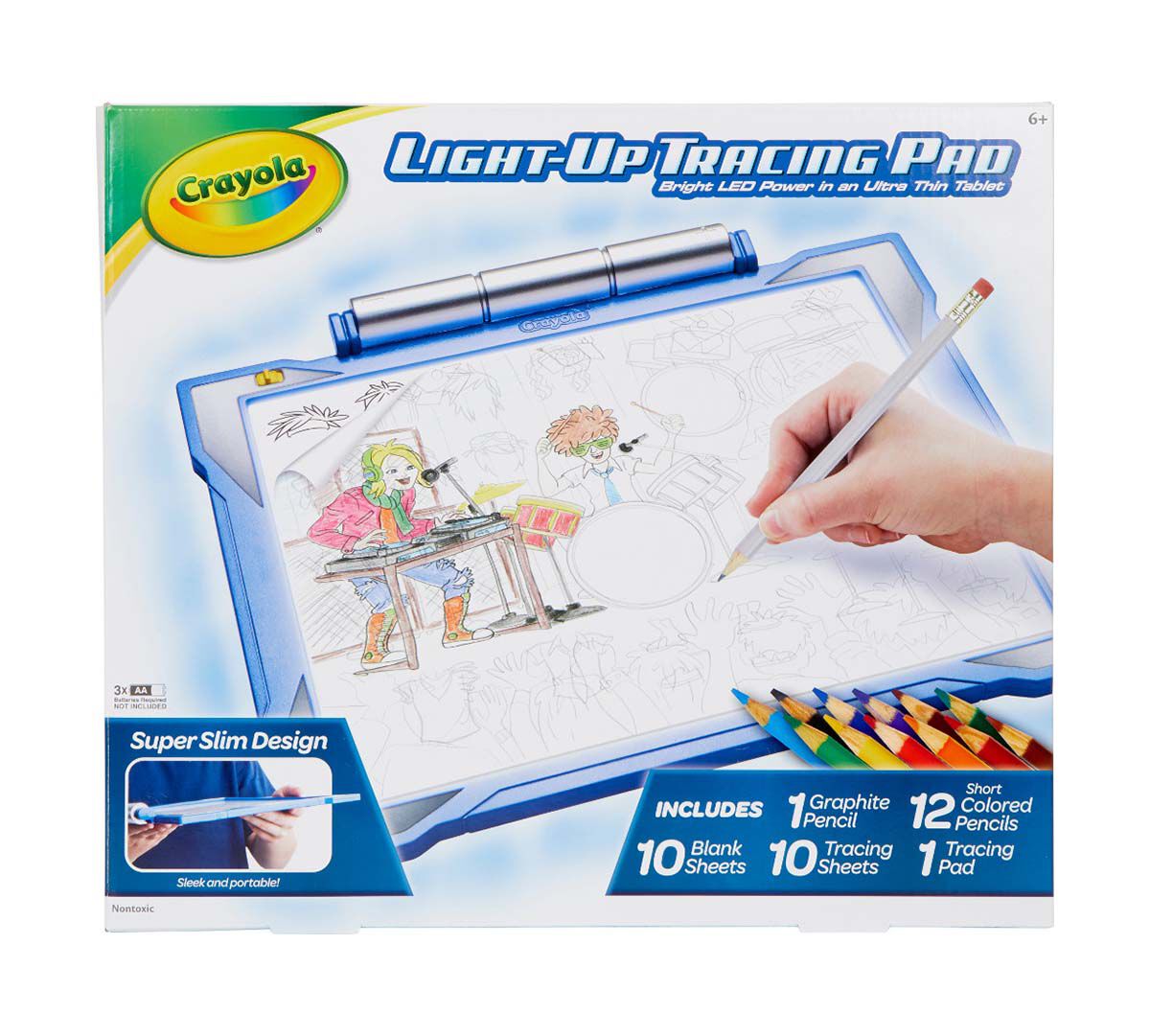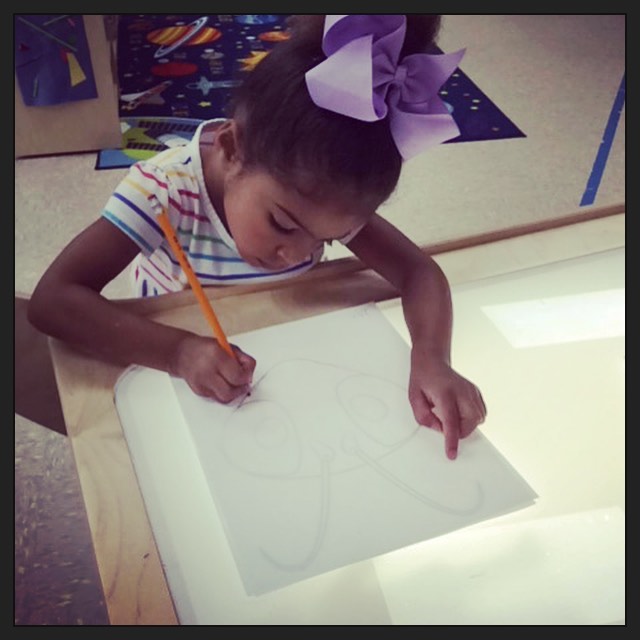

If they say, “want water,” repeat after them, “I want water?” and have them repeat that as well.Īdding on words to their current vocabulary will help them speak in longer phrases and sentences. For example, if your child says “more,” repeat after them, “more Cheerios?” and have them repeat the two words together. If your child has several words, help them to group words together if they’re not doing so on their own.

although this may still develop more later) Direction words (below, above, next to, on top, underneath, etc.Household objects (names of certain food, utensils, furniture, clothing, etc that they use daily).Vehicles (cars, trucks, firetruck, airplane).Names (their own first and last name, and names of family and friends).Action words to help them communicate (more, go, come, want, up, down, etc.).Here are some of the common words, phrases, and concepts that your two year old may be able to say and understand:
#CRAYOLA TRACING LIGHT TABLE KIDS HOW TO#
Now they’re learning how to put these words together to form 2-3 word phrases, short sentences, and questions. Your 2-year-old should have gained a slew of new vocabulary words in the past year. This isn’t a list of what they should know at this point, but rather a guide to help you understand what they may be capable of learning at this age. Not exclusively once they turn two.Īlways remember that every child develops at their own pace so don’t worry too much if your child doesn’t know all of these concepts yet. Practice and exposure is the best way to develop new skills with your child.īelow is a list of learning activities for two year olds for the whole range up to 3. What You Can Teach Your Two Year Oldīelow are a bunch of skills and concepts that you can help your 2-year-old to understand.

However, if you’re not in the education field, you may be unsure of simple ways to teach your two year old or ways to incorporate new learning into everyday activities. Most of what they learn, you won’t even realize that you’re teaching them! They’ll also be developing key skills like hand-eye coordination and independence.īoth structured and unstructured play are important to develop these necessary skills. Toys and gadgets may be teaching them things like cause-and-effect, problem solving, and new language. Two Year Olds Can Learn Through Play ActivitiesĪs a pediatric occupational therapist, I know that children can learn a significant amount of knowledge through their everyday play. You have successfully joined our subscriber list.


 0 kommentar(er)
0 kommentar(er)
